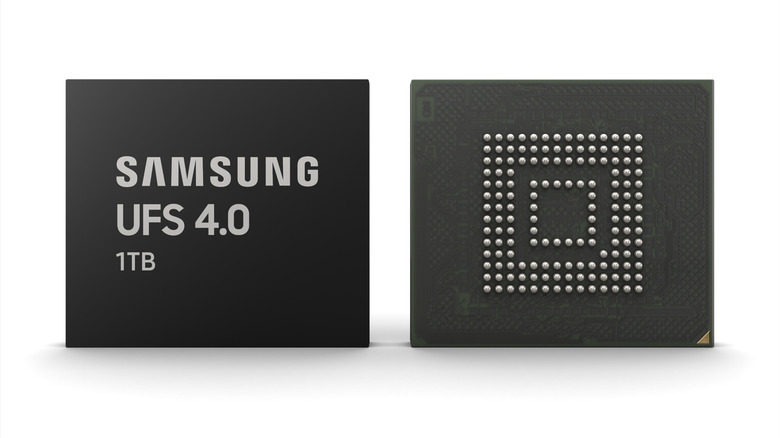Android Smartphones Are Poised For A Major Memory Upgrade
We may receive a commission on purchases made from links.
Onboard storage modules on smartphones have been getting progressively faster over the past few years. From older, slower eMMC storage, most mid-range smartphones have moved to the much faster UFS standard. Most modern smartphones feature the 4-year-old UFC 3.0 standard, which debuted in 2018, while the newer flagships have moved on to the even faster UFS 3.1 standard — which made its debut two years ago — in 2020.
Nearly two years on, it seems the smartphone storage arena is set for a significant speed bump. In May 2022, Samsung's semiconductor division announced its intentions to announce the first UFS 4.0 memory modules before the end of 2022. On August 2, 2022, the company announced that mass production of the first of the UFS 4.0 memory modules will commence starting this month.
Interestingly, this announcement comes just a week before Samsung's smartphone division intends to launch the company's next generation of foldable smartphones — the Samsung Galaxy Z Fold 4 and the Flip 4. While Samsung is yet to confirm if these two devices will get UFS 4.0 storage, chances of that happening are low, given that Samsung will only begin mass producing these memory modules this month.
A good contender for the UFS 4.0-based storage would be the next generation of flagship devices set to launch either by the end of 2022 or all through 2023 and 2024. For example, if Samsung sticks to the release schedule it's run by over the past half-decade, their next generation of Galaxy S series devices will quite likely launch just in time to come loaded with this faster flash storage standard.
What are the advantages of UFS 4.0?
Apart from the expected performance gains, the UFS 4.0 standard also claims to be 46% more energy efficient than existing UFS 3.1 storage modules. These performance and efficiency gains are achieved despite the module's size becoming slightly smaller.
UFS 4.0 claims to reach speeds of 23.2 Gbps per lane compared to UFS 3.1's maximum theoretical speeds of 11.6 Gbps per lane. As far as sequential read is concerned, UFS 4.0 claims read speeds of up to 4200 Mbps in comparison to 2100 Mbps for UFS 3.1. Write speeds will also significantly improve thanks to UFS 4.0's claimed sequential write speeds of up to 2800 Mbps as opposed to 1200 Mbps on UFS 3.1. One area where UFS 4.0 and UFS 3.1 remain largely unchanged is the maximum possible storage capacity which remains capped at 1TB.
Given the significant performance gains with the move to UFS 4.0, most users should experience a tangible improvement in memory read and write performance on the next generation of Android flagships. It remains to be seen how long we'd need to wait before the first of the UFS 4.0-toting smartphones go on sale.

